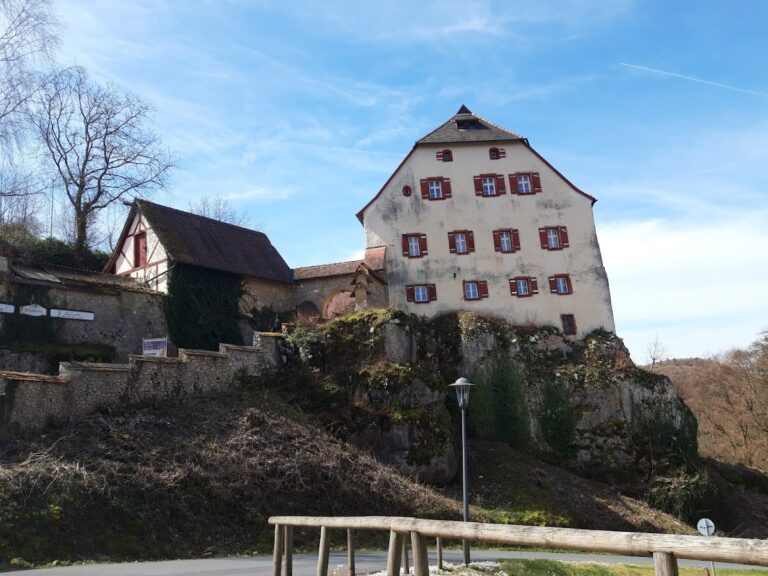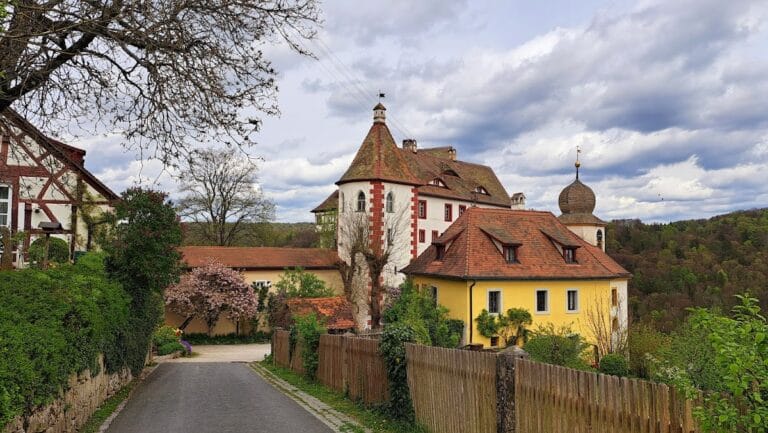Rothenberg Fortress: A Historic Bastion in Bavaria, Germany
Visitor Information
Google Rating: 4.3
Popularity: Low
Google Maps: View on Google Maps
Official Website: www.heimatverein-schnaittach.com
Country: Germany
Civilization: Medieval European
Remains: Military
History
The Rothenberg site near Schnaittach, Germany, was first settled around 600 BCE by Celtic Hallstatt tribes. These early inhabitants likely established a fortified settlement, or oppidum, similar to nearby sites such as Houbirg and Ehrenbürg. The exact date when the first medieval fortification appeared on Rothenberg remains unknown.
The earliest medieval castle, known as Alter Rothenberg, stood northwest of the current fortress and was first recorded in 1254 as the residence of the lords of Rothenberg. This noble family became extinct by the late 13th century. The castle was probably destroyed during a local feud and replaced between 1300 and 1330 by a new castle built by Dietrich von Wildenstein on a different hill.
In 1360, Emperor Charles IV acquired the castle and expanded it into a fortress to protect his Bohemian allodial territory called Neuböhmen. The fortress grew in importance as an imperial possession. A settlement developed outside its walls, forming the town of Rothenberg, which included a church, parish, cemetery, and fortified walls with 26 towers.
Following the deposition of Emperor Wenceslaus, King Rupert of the Palatinate and Nuremberg besieged and captured the town and fortress in 1401. The town suffered destruction again during the First Margrave War in 1449–1450. Due to unfavorable conditions, it was not rebuilt, and its inhabitants resettled in nearby Schnaittach.
In 1478, Count Palatine Otto II transformed the fortress into a Ganerbenburg, a jointly owned castle, initially shared by 44 co-heirs. This number later rose to 133, including several local noble families. These co-heirs held limited rights but formed a strong alliance. The fortress held patronage rights in the Nuremberg area and earned the nickname “wasp’s nest” during the tenure of Silvester von Schaumberg.
Between 1483 and 1618, the Ganerbenburg community elected burgraves from among its members. Prominent families such as Guttenberg, Seckendorff, Stiebar, and Sparneck took part in this governance. Conflicts with the Free Imperial City of Nuremberg intensified, especially after Rothenberg became an enclave within Nuremberg territory following the Landshut War of Succession. Territorial disputes were resolved by treaties in 1523 and 1540.
The Ganerbenburg adopted Lutheranism in 1529. However, during the Thirty Years’ War, Bavarian Elector Maximilian occupied the fortress to enforce re-Catholicization. After losing control, the co-heirs sold the fortress to Bavaria for 200,000 gulden.
After Bavaria acquired the fortress in 1698, it underwent renovations and reinforcements. During the War of Spanish Succession in 1703, the fortress was besieged and surrendered due to supply shortages. Following this, it was slighted on orders from Nuremberg, meaning parts were deliberately damaged to prevent military use.
Between 1720 and 1743, Elector Charles Albert of Bavaria, later Emperor Charles VII, commissioned the construction of the current Rococo-style fortress on the ruins. From 1740, a Bavarian garrison was stationed there. The fortress successfully resisted Austrian attempts to capture it during the War of Austrian Succession (1740–1744). It remained neutral during the Franconian Circle’s involvement and supplied arms to defenders.
During the Coalition Wars from 1793 to 1806, the fortress was not actively engaged in combat but was used by passing troops from France, Austria, and Bavaria. After the Holy Roman Empire dissolved and Bavaria became a kingdom, Rothenberg lost its enclave status and strategic border role.
From 1806 onward, the fortress served as a prison and veterans’ home with a reduced garrison. Maintenance declined due to water damage and structural issues. King Ludwig I officially decommissioned the fortress in 1838. After abandonment, movable assets were removed, and the site was quarried for building materials. The area was reforested and became a popular excursion spot by the late 19th century. Preservation efforts began in 1898 by a local heritage association.
Between 1999 and 2006, the fortress hosted cultural events. A major restoration was completed in 2008, preserving the site for historical and educational purposes.
Remains
The Rothenberg Fortress occupies a hill ridge and features a polygonal layout typical of 18th-century bastion fortifications. Its design follows French principles, with bastioned towers arranged in a star shape to eliminate blind spots. The fortress walls rise 16 meters high, built entirely of masonry with vaulted interiors reaching 10 meters. The rampart crown is kept low to reduce exposure to enemy fire.
The northern defenses include a gently sloping glacis, a covered way, a moat, and a main rampart barely higher than the glacis. Natural slopes protect the south, east, and west sides from direct assault but leave the fortress vulnerable to siege artillery of its time.
Inside the fortress stand two two-story barracks buildings, known as the Artillery and Infantry barracks, alongside an armory, engineer’s house, gatehouse, commandant’s quarters, and a church. Soldiers and some families lived within these walls. Bastions bear names linked to Charles Albert, his wife Maria Amalia, the nearby Glatzenstein hill, and the towns of Kersbach, Nuremberg, and Schnaittach.
The former town area, located outside the main fortress, once contained economic and supply buildings such as a powder magazine, laundry with bleaching meadow, horse watering place, shepherd’s hut, quarry with lime pits, gardens, guardhouse, and parade ground. Today, only foundations and ditches remain visible.
Water supply posed a significant challenge despite nearby natural springs. A deep well tapping groundwater has been in use since the castle’s earliest construction. From 1760, a complex system called the Schneckenbrunnen, or Snail Well, was built. It features a 40-meter-long collection tunnel, a draw well shaft, and a helical staircase shaft for monitoring water levels. This well was protected by a counterguard named after Max Joseph, constructed of rubble stone outside the main walls. A planned underground passage connecting the well to the fortress was never completed.
After abandonment, the well system was filled in but restored between 1987 and 1989. It now supplies about 4,000 liters of water weekly. Excavations uncovered artifacts including a gold ducat coin, a stiletto, harmonicas, stone marbles, charred bricks, a knife, ceramic fragments, forged nails, and a barrel hoop.
Historical copper engravings from 1838 show that rainwater collection also played a key role in the fortress’s water supply.
A cemetery used from 1740 to 1843 lies southeast of the fortress. It contains 1,083 burials and was restored in 1927, with surviving gravestones relocated to the current site.










